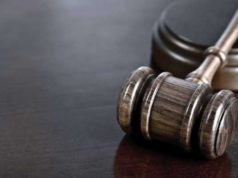
Medical malpractice is a serious issue in the United States, and an expense one to litigate as well. The plaintiffs must be completely sure that a form of medical malpractice has occurred. Even at that there are financial obstacles that also stand in the way. Many times if a malpractice case occurs within a hospital the plaintiff must be ready to outspend the hospital as an entity in the courtroom, at times the costs outweigh what can be garnished in a settlement and therefore plaintiffs walk away from the case. One of the biggest elements in a medical malpractice case is the plaintiffs’ ability to show a burden of proof.
Burden of proof laws vary from state to state; some states have more stringent burden of proof laws while other states allow for much more leeway. This variation also drives up the cost of medical expenses as a whole, due to the large settlements usually awarded in medical malpractice cases hospitals and doctors offset their financial liability by raising the costs of medical procedures. However, when a medical malpractice case does occur, in all states, there are a certain elements that need to be met under all burden of proof laws for the case to proceed to litigation. Negligence, breach of contract, breach of medical duty, omission of facts are all forms of medical malpractice that under burden of proof laws can be brought in front of the court.
The most common of which is negligence. Negligence may manifest in a number of ways, so the paper trail in all cases is highly important. A doctor may make a mistake during surgery causing grievous bodily harm, if there was an outside cause to this mistake (say beyond the simple slip of a hand) then the doctor very well could find a medical malpractice lawsuit waiting for him. General neglect is another form of negligence and is the easiest to substantiate in a court of law.
This is when a doctor can either delay treatment for no direct reason, misdiagnose a grave illness for a common disease, breaches their duty as a medical professional, and possibly cause injury if all the parts fall into place. With all these factors actually present many lawyers would consider this to be a ‘slam dunk’ case since negligence can be easily proven. However, if one of these factors are missing this is where the high cost of medical malpractice litigation arises as both sides will dig deep to show there was not any true negligence.
In any medical malpractice case the burden of proof falls directly on the plaintiff. It is up to the plaintiff to prove that his or her doctor is liable for the damages cause. In some cases this is the person while in other more grave cases this can be the family of the person. In states with stricter medical malpractice laws it can be difficult to prove doctor negligence if there is not paper trail in his documents or direct actions that can be deemed negligence.
Resa Ipsa Loquitor
Certain legal concepts, like that of medical malpractice law, require doctrine to argue the cases beyond just what is found in a legal textbook. Resa Ipsa loquitor is one such doctrine that outlines what should be present in all malpractice lawsuits. The four main tenets are fairly simple to understand and can be broken into two groups quite easily. The first group relates to proving that the doctor was negligent in their behavior which in turn caused the personal injury that is suffered by the plaintiff.
The second group, the last two, moves to show that the plaintiff in no way contributed to the personal injury that he or she is suffering from. While there can be divergence from this doctrine in some cases, it is mostly present in all malpractice cases. If any part of the four tenets is missing it can be grounds to dismiss the case from a court of law. Usually only the most extreme cases move away from this doctor and attempt to prove negligence in other fashions, sometimes the case is so simple as well that he criteria listed above are naturally achieved from the start of the case.
Infliction of Mental Distress
Sometimes the law can lag behind the changing moral codes and scientific knowledge of the time. Law is inherently reactionary as it takes into account what happened. If law was applied proactively it can be taken to constrain the personal freedom of citizens which is prohibited by the United States constitution. One such area where law needs to adapt to the changing times may be in the field of mental distress, and furthermore the infliction of mental distress on another person.
Yet, the court until this point has had a hard time trying to define and measure mental distress. A person can claim severe mental distress but may even appear to be in a normal state to a psychiatrist, it is sometimes very hard to determine. Usually the courts today link mental distress to a physical event, in effect, showing a direct causality for the distress. In other cases the courts mandate that the mental distress had to be caused in a public forum, in a sense, loosely justifying a reason behind why a person is feeling a certain way.
Fraudulent Concealment of Evidence
There are some forms of malpractice that are not medical malpractice. Malpractice can also occur within the field of law; one of the most common infractions is the fraudulent concealment of evidence on behalf of an attorney. In these instances the attorney in question does not provide all pertinent information during discovery in a manner of speaking changing the fairness of the case. By withholding information the attorney can slant the case in his or her direction. While one of the most important duties for an attorney is to represent his or her client’s interests to the fullest lawyers also have a responsibility unto the court.
As officers of the court certain standards need to be kept and followed. One standard is to provide all pertinent evidence in a court case during the discovery period. If this is not done it can lead to criminal charges and even disbarment. Legal malpractice can be just as damaging as medical malpractice as the attorney is question may find their career over and the people that the represent will need to incur costs of obtaining a new lawyer and problem costs in getting the money back from the lawyer guilty of fraudulent concealment of evidence.

























